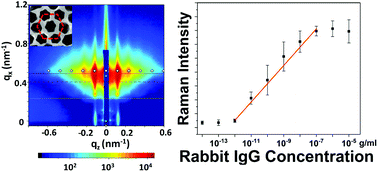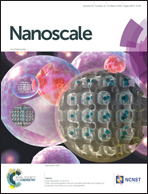Two-dimensional gold trisoctahedron nanoparticle superlattice sheets: self-assembly, characterization and immunosensing applications†
Abstract
Nanoparticles were called “artificial atoms” about two decades ago due to their ability to organize into regular lattices or supracrystals. Their self-assembly into free-standing, two-dimensional (2D) nanoparticle arrays enables the generation of 2D metamaterials for novel applications in sensing, nanophotonics and energy fields. However, their controlled fabrication is nontrivial due to the complex nanoscale forces among nanoparticle building blocks. Here, we report a new type of 2D plasmonic superlattice from high-index gold trisoctahedron (TOH) nanoparticles. TOH is an anisotropic polyhedron with 24 facets and 14 vertices. By using polymer ligands in conjunction with drying-mediated self-assembly, we obtained highly ordered 2D superlattices as quantified by synchrotron based grazing-incidence small-angle X-ray scattering (GISAXS). The plasmonic properties were optimized by adjusting the ligand length and particle size. The excellent surface-enhanced Raman scattering (SERS) performance enables us to demonstrate TOH superlattices as uniform SERS immunosubstrates with a detection limit down to 1 pg ml−1 and a dynamic range from 1 pg ml−1 to 100 ng ml−1.



 Please wait while we load your content...
Please wait while we load your content...